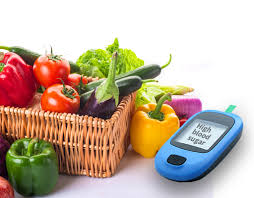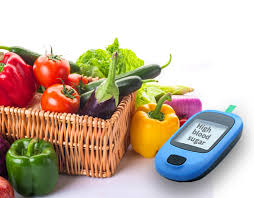
Managing diabetes starts with the right nutrition — and that’s where the diabetic diet comes in. A well-balanced diabetic diet can help stabilize blood sugar, support healthy weight management, and lower the risk of complications. Whether you’ve been diagnosed with type 2 diabetes, prediabetes, or are looking to support a loved one, understanding the basics of a diabetic diet is essential.
In this guide, we’ll break down the best foods for diabetes, what to avoid, and simple tips to create a sustainable, blood sugar-friendly lifestyle.
What Is a Diabetic Diet?
A diabetic diet is not a one-size-fits-all plan but rather a structured eating approach that focuses on nutrient-dense, low-glycemic foods. The goal is to maintain stable blood sugar levels throughout the day by balancing carbohydrates, proteins, and fats.
A healthy diabetic meal plan includes:
Complex carbohydrates in moderation
Lean proteins
Healthy fats
Fiber-rich vegetables and fruits
Limited added sugars and refined grains
By choosing the right foods and eating them in the right portions, people with diabetes can better manage their glucose levels and reduce dependence on medications.
Best Foods to Eat on a Diabetic Diet
Here’s a list of diabetes-friendly foods that support healthy blood sugar management:
1. Leafy Greens
Spinach, kale, and other greens are low in calories and carbohydrates. They’re also packed with antioxidants and fiber, which help improve insulin sensitivity.
2. Whole Grains
Choose whole grains like quinoa, brown rice, oats, or barley. These are low-glycemic carbohydrates that digest slowly, preventing blood sugar spikes.
3. Lean Proteins
Chicken, turkey, tofu, eggs, and fish (especially fatty fish like salmon and sardines) are excellent protein sources. Protein slows the absorption of carbohydrates, helping control glucose levels.
4. Nuts and Seeds
Almonds, chia seeds, flaxseeds, and walnuts offer healthy fats and fiber, which can reduce inflammation and regulate blood sugar.
5. Low-Glycemic Fruits
Berries, apples, and pears can be included in moderation. These fruits are rich in fiber and have a smaller impact on blood sugar compared to bananas or tropical fruits.
6. Non-Starchy Vegetables
Broccoli, cauliflower, bell peppers, cucumbers, and zucchini are low in carbs and high in fiber, making them perfect for a diabetic diet.
Foods to Avoid on a Diabetic Diet
Certain foods can cause rapid spikes in blood sugar and increase the risk of long-term complications. Try to limit or avoid the following:
Sugary beverages (soda, fruit juices, sweetened teas)
Refined carbs (white bread, white rice, pastries)
Fried foods and trans fats
High-sugar snacks (cookies, cakes, candy)
Full-fat dairy and processed meats
Alcohol (limit to moderate amounts and avoid on an empty stomach)
Sample Diabetic Diet Meal Plan
Here’s an example of a balanced day on the diabetic diet:
Breakfast:
Scrambled eggs with spinach
A slice of whole grain toast
Half an avocado
Black coffee or herbal tea
Lunch:
Grilled chicken salad with mixed greens, cucumber, tomato, and olive oil dressing
Small portion of quinoa or lentils
Snack:
Handful of almonds or Greek yogurt (unsweetened)
Dinner:
Baked salmon
Steamed broccoli and cauliflower
Sweet potato (small portion)
Dessert (optional):
Fresh berries with a spoonful of unsweetened whipped cream
Tips for Success on a Diabetic Diet
1. Monitor Carbohydrates
Use tools like carb counting or the plate method to manage your portions. Aim to spread carbs evenly across meals to avoid blood sugar spikes.
2. Focus on Fiber
Fiber slows digestion and improves blood sugar control. Try to get at least 25–30 grams per day.
3. Stay Hydrated
Drink plenty of water throughout the day. Avoid sugary drinks that cause sudden glucose surges.
4. Exercise Regularly
Physical activity improves insulin sensitivity. Aim for 30 minutes of walking, biking, or swimming most days.
5. Check Blood Sugar Levels
Track your blood sugar before and after meals to see how different foods affect your levels. This helps in adjusting your diet accordingly.
Final Thoughts
Following a diabetic diet doesn’t mean giving up your favorite foods — it’s about making smarter choices and maintaining balance. By prioritizing whole, nutrient-rich foods and avoiding processed, sugar-laden options, you can better control your blood sugar, lose weight if needed, and feel more energized throughout the day.
Always work with a registered dietitian or healthcare provider to personalize your diabetic meal plan based on your unique health needs.
